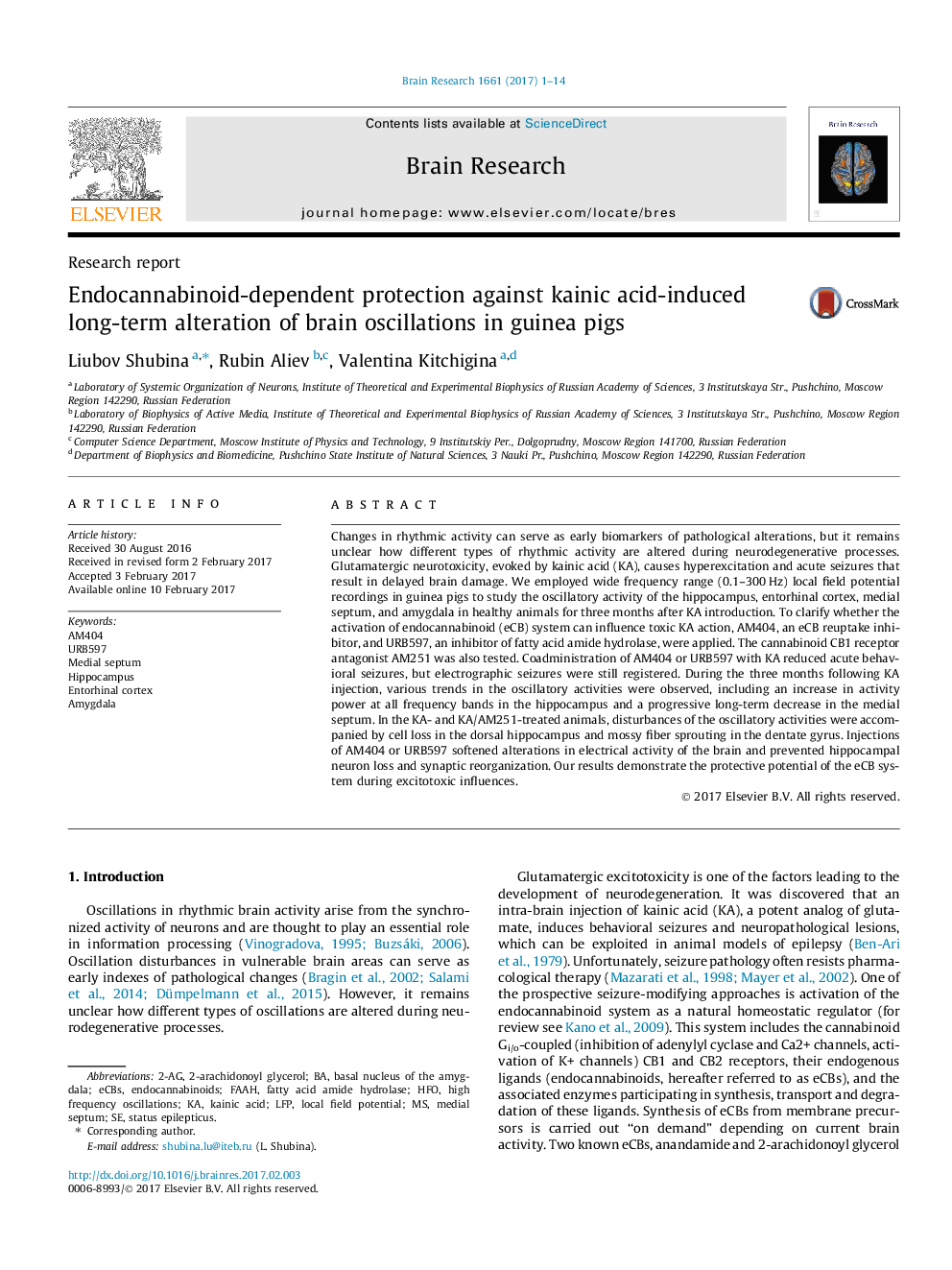| کد مقاله | کد نشریه | سال انتشار | مقاله انگلیسی | نسخه تمام متن |
|---|---|---|---|---|
| 5736807 | 1613784 | 2017 | 14 صفحه PDF | دانلود رایگان |
- We modeled kainic acid (KA)-induced neurotoxicity, which caused status epilepticus.
- KA provoked disturbances of brain oscillations and hippocampal structure.
- Enhancing of endocannabinoid (eCB) signaling counteracts KA-induced alterations.
- CB1 receptor antagonist did not modulate essentially excitotoxic influences.
- Modulation of eCB metabolism can be useful in prevention of glutamate toxicity.
Changes in rhythmic activity can serve as early biomarkers of pathological alterations, but it remains unclear how different types of rhythmic activity are altered during neurodegenerative processes. Glutamatergic neurotoxicity, evoked by kainic acid (KA), causes hyperexcitation and acute seizures that result in delayed brain damage. We employed wide frequency range (0.1-300Â Hz) local field potential recordings in guinea pigs to study the oscillatory activity of the hippocampus, entorhinal cortex, medial septum, and amygdala in healthy animals for three months after KA introduction. To clarify whether the activation of endocannabinoid (eCB) system can influence toxic KA action, AM404, an eCB reuptake inhibitor, and URB597, an inhibitor of fatty acid amide hydrolase, were applied. The cannabinoid CB1 receptor antagonist AM251 was also tested. Coadministration of AM404 or URB597 with KA reduced acute behavioral seizures, but electrographic seizures were still registered. During the three months following KA injection, various trends in the oscillatory activities were observed, including an increase in activity power at all frequency bands in the hippocampus and a progressive long-term decrease in the medial septum. In the KA- and KA/AM251-treated animals, disturbances of the oscillatory activities were accompanied by cell loss in the dorsal hippocampus and mossy fiber sprouting in the dentate gyrus. Injections of AM404 or URB597 softened alterations in electrical activity of the brain and prevented hippocampal neuron loss and synaptic reorganization. Our results demonstrate the protective potential of the eCB system during excitotoxic influences.
275
Journal: Brain Research - Volume 1661, 15 April 2017, Pages 1-14
